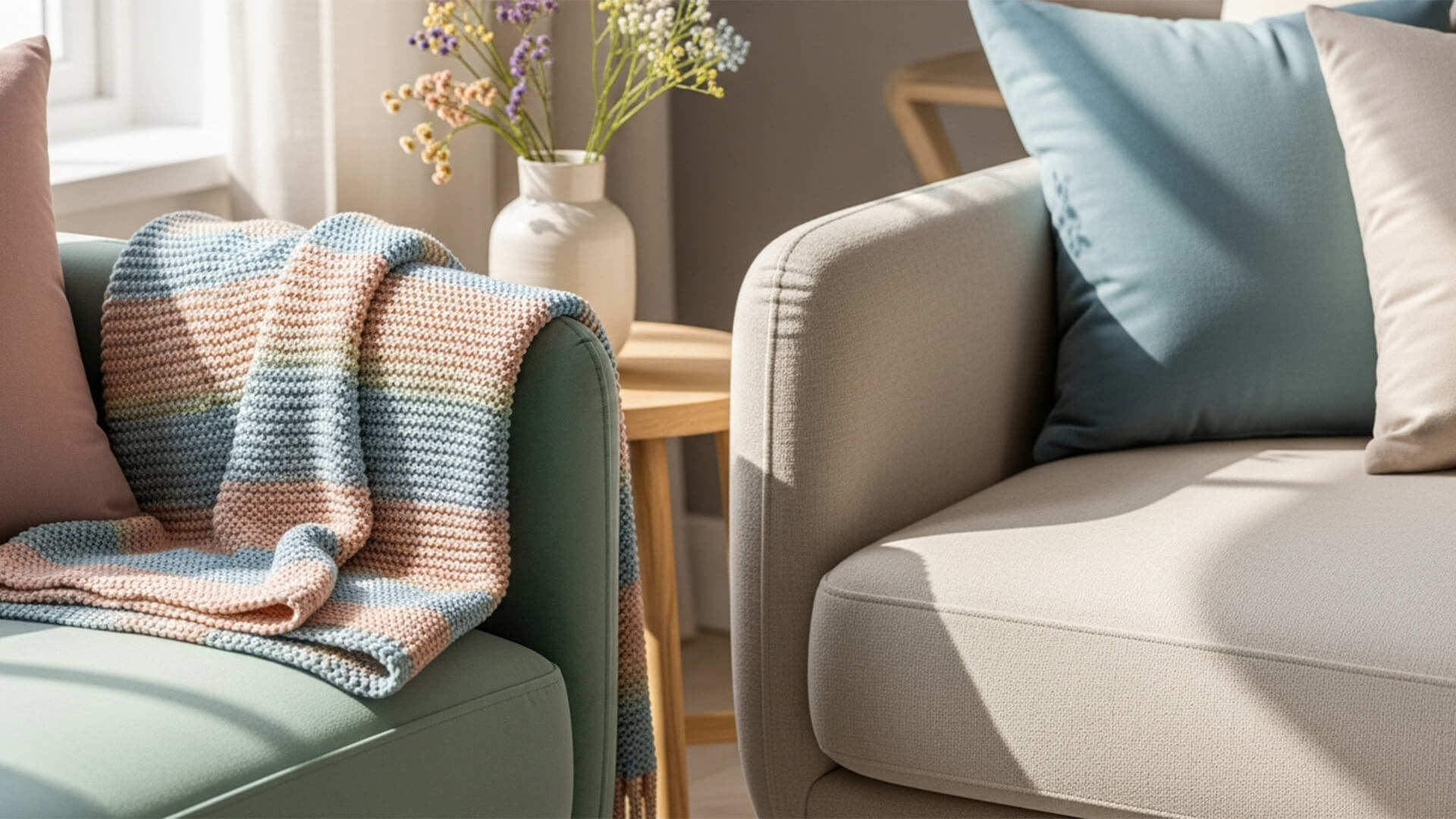Color Psychology: How Decoration Affects Emotions
24 Kasım 2025Our home is not just a living space; it is also a psychological environment that affects our mood, energy, and motivation. The colors we choose in home decoration not only determine the aesthetics of a space but also shape our emotional experience.
In this article, we will focus on the psychology of colors and explore how choosing the right colors in decoration can enhance your quality of life.
What Is the Psychology of Colors?
The psychology of colors studies the emotional responses and behaviors that people associate with colors. Each color is linked to a particular mood, emotion, or energy. Applying this knowledge in home decoration helps control the atmosphere of a space.
For example, warm colors (red, orange, yellow) bring energy and liveliness, while cool colors (blue, green, purple) create calmness and serenity. Therefore, choosing colors for different areas, from the living room to the bedroom, is important both aesthetically and psychologically.
Red: The Color of Energy and Vitality
Red symbolizes energy and dynamism. When used correctly in decoration, it adds movement and vibrancy to a space. However, excessive red can create an aggressive or tense atmosphere.
- Living room: Small decorative objects or cushions in red can create an energetic environment.
- Dining room: Red can stimulate appetite, making it suitable for dining areas.
Balanced use of red provides both vitality and warmth to a space.
Blue: The Color of Calm and Peace
Blue evokes calmness and tranquility. Blue tones are ideal for bedrooms and workspaces to reduce stress.
- Bedroom: Soft blue tones create a comfortable sleeping environment.
- Workroom: Light blue enhances focus and promotes mental calmness.
Blue also conveys a sense of security, making it highly valuable in interior design both aesthetically and psychologically.
Green: Nature and Balance
Green, the color of nature, is associated with balance and relaxation. Using green in interiors helps the eyes rest and reduces stress.
- Living and sitting areas: Green tones add freshness and create a soothing atmosphere.
- Plants and decorative items: Green plants are perfect for creating a natural and balanced environment.
Green is a widely preferred color in decoration due to its calming and positive energy.
Yellow: Happiness and Cheerfulness
Yellow is a warm color linked to happiness, joy, and energy. It brings a lively and positive atmosphere to living spaces.
- Kitchen and dining areas: Yellow stimulates appetite and adds energy.
- Decorative accessories: Yellow cushions, paintings, or small objects create a positive energy in the room.
However, too much yellow can be tiring for the eyes; it is best used in moderation.
Orange: Creativity and Sociability
Orange encourages creativity and sociability. It is perfect for creating a lively and welcoming atmosphere.
- Living room: Orange tones make social areas warm and inviting.
- Hobby or workrooms: Orange objects or wall accents can boost creativity and motivation.
Orange adds dynamism to the space without being overwhelming, supporting social interaction.
Purple: Luxury and Creativity
Purple has historically represented luxury, elegance, and creativity. Used correctly, it creates a sophisticated and balanced atmosphere.
- Bedroom and living room: Light purple tones provide a relaxing and calming effect.
- Accessories and decorative items: Purple accents offer elegance and refinement.
Purple is a special choice that stands out both aesthetically and psychologically.
White: Cleanliness and Simplicity
White symbolizes purity, cleanliness, and simplicity. It makes spaces feel larger and brighter and works well with other colors.
- Living and bedrooms: White creates a spacious and airy feel.
- Furniture and walls: White furniture and walls provide a flexible base, allowing other colors to stand out.
White is indispensable in minimalist decoration trends.
Color Combinations and Emotional Effects
Instead of using a single color, color combinations can enhance the mood of a space:
- Blue + White: Creates a calm, clean, and peaceful atmosphere.
- Red + Orange: Creates an energetic, lively, and social environment.
- Green + Yellow: Produces a balanced, cheerful, and natural feeling.
These combinations help create aesthetically and psychologically balanced interiors.
Integrating Color Psychology Into Decoration
Tips to maximize the psychological effects of colors:
- Choose colors based on the function of the room: Calm tones for bedrooms, energetic tones for living rooms.
- Maintain balance: Avoid excessive use of a single color; balance colors in accessories and details.
- Support colors with lighting: Natural and artificial light can change how colors are perceived.
- Coordinate furniture and walls: Colors of furniture, walls, and accessories should harmonize to enhance psychological balance.
Bring Life to Your Spaces With Colors
The psychology of colors affects not only the aesthetics but also the emotional experience of your home. With the right choices, you can:
- Create more peaceful bedrooms,
- Design energetic and social living rooms,
- Make kitchens cheerful and lively.
Colors are more than decoration; they directly impact your mood and life quality. By understanding the psychology of colors, you can make your living spaces both beautiful and emotionally fulfilling.
You can explore Doğtaş’s website here to create a unique decoration world in your living spaces with high-quality, modern, and functional choices and your favorite colors.





